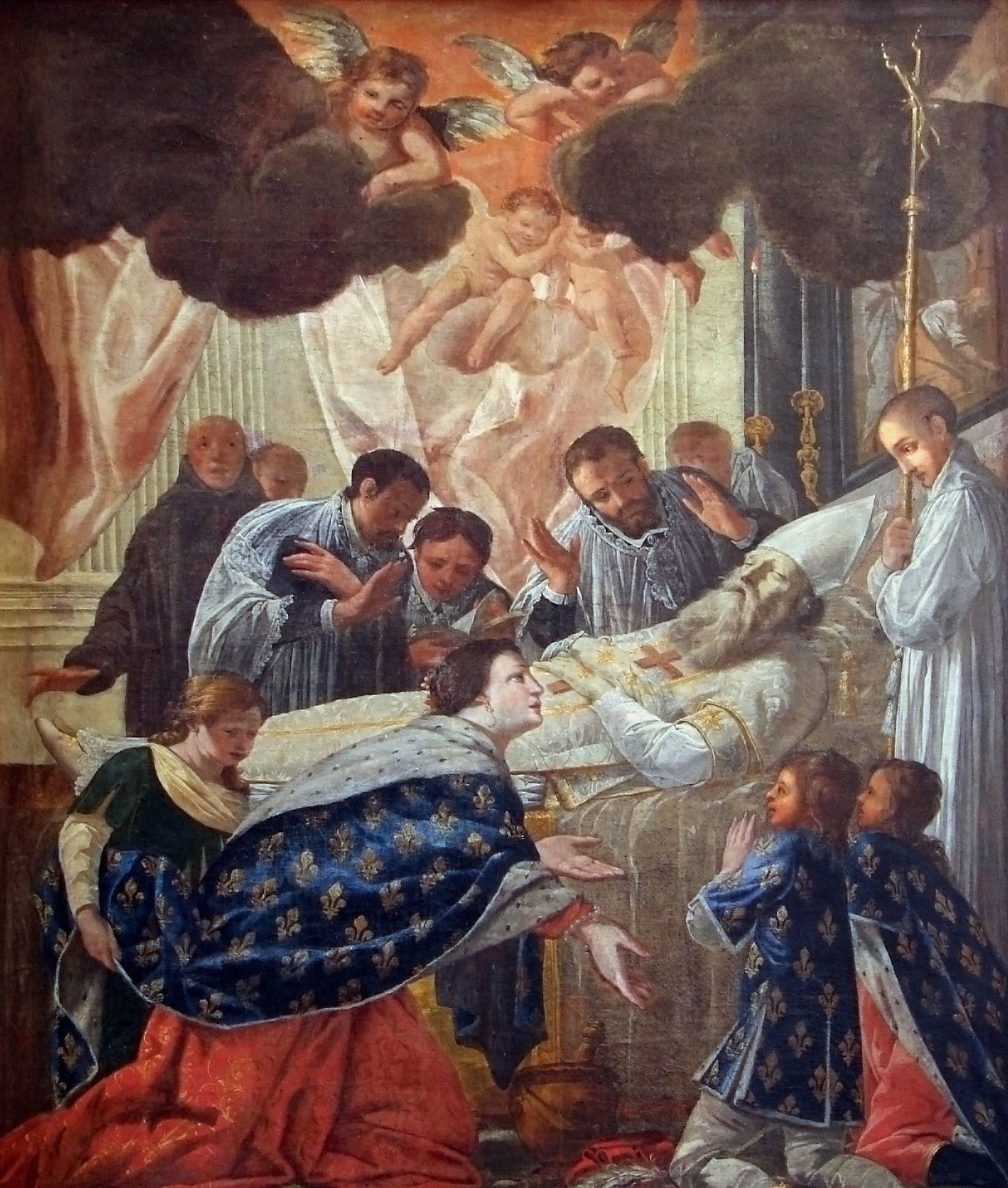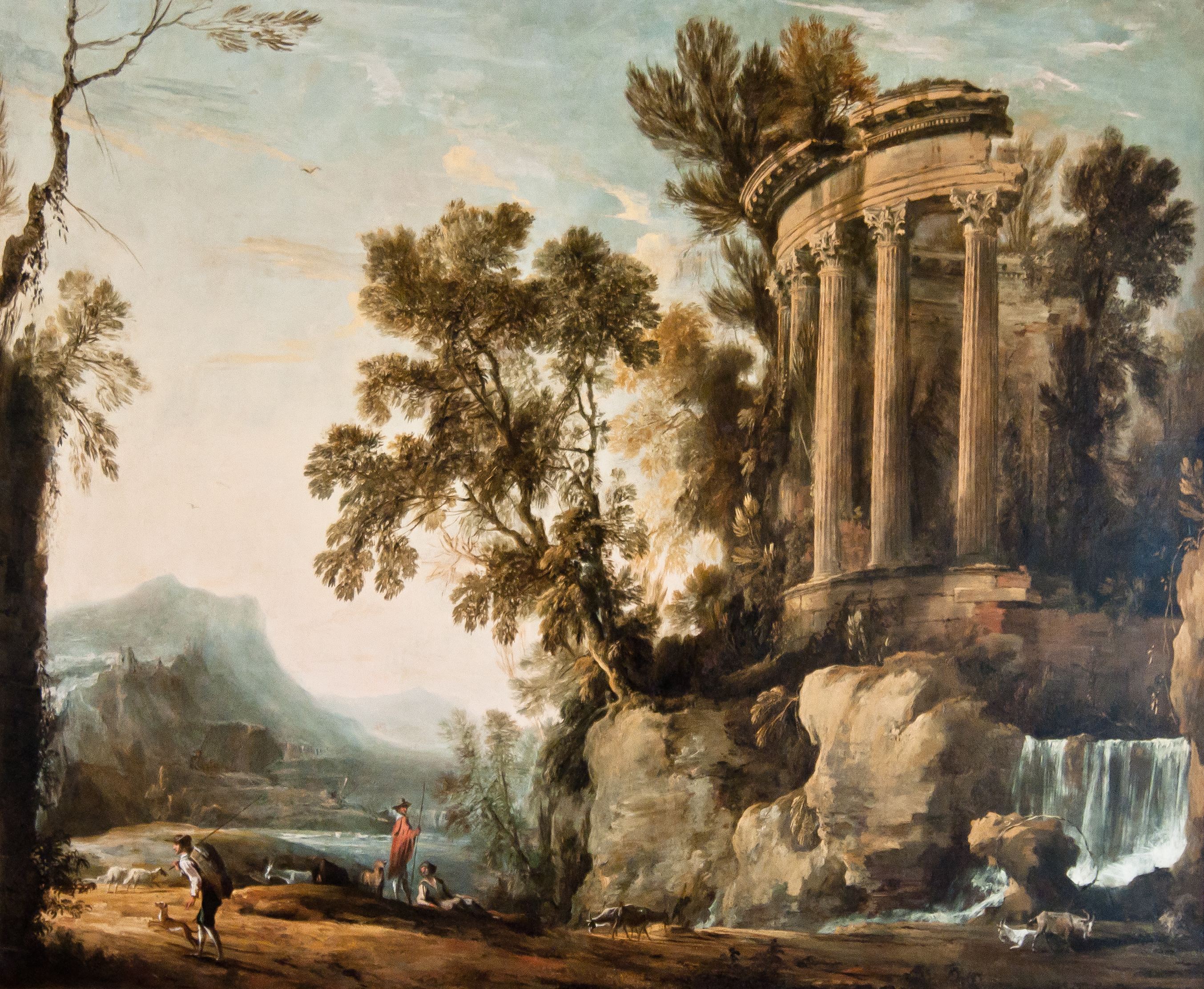|
Jean Senelle
Jean Senelle (1605–1671) was a French painter. He studied in the studios of Georges Lallemand and Simon Vouet. His style is similar to that of Laurent de La Hyre and Claude Vignon, showing the evolution of late Mannerism into baroque classicism. Most of his works are now in the musée Bossuet The Musée Bossuet is the art and history museum of the town of Meaux, France. Situated in the old episcopal palace, it takes its name from the famous orator and theologian, Jacques-Bénigne Bossuet, Bishop of Meaux from 1681 to 1704. Buildings ... in Meaux, where he died. Bibliography * Catalogue de l'exposition de Meaux, Musée Bossuet, 1998. 17th-century French painters 1605 births 1671 deaths {{France-painter-stub ... [...More Info...] [...Related Items...] OR: [Wikipedia] [Google] [Baidu] |
Georges Lallemand
Georges Lallemand (before 1575–1636) was a French artist. His name is sometimes given as "Lallemant". Life Lallemand was born in Nancy in around 1575. Nothing is known of his artistic education, but he is often assumed to have been a pupil of Jacques Bellange, whose work seems to have had a significant impact on him. He moved to Paris in about 1601 and by 1605 had established a successful studio, where his pupils included Philippe de Champaigne, Laurent de la Hyre and Nicolas Poussin. His style was eclectic, combining Flemish realist and mannerist influences. Few of his paintings have been traced, much of his work having been dispersed when church property was seized during the French Revolution. His earliest known work, ''The Mayor and Aldermen of Paris'' ( Musée Carnevalet) dates from 1611. He was appointed ''Peintre ordinaire du roi'' in 1626.During the last few years of his life he received commissions for altarpieces and tapestries for the cathedral of Notre Dame, a ... [...More Info...] [...Related Items...] OR: [Wikipedia] [Google] [Baidu] |
Simon Vouet
Simon Vouet (; 9 January 1590 – 30 June 1649) was a French painter who studied and rose to prominence in Italy before being summoned by Louis XIII to serve as Premier peintre du Roi in France. He and his studio of artists created religious and mythological paintings, portraits, frescoes, tapestries, and massive decorative schemes for the king and for wealthy patrons, including Richelieu. During this time, "Vouet was indisputably the leading artist in Paris,"Posner, Donald. "''The Paintings of Simon Vouet'' " (book review), ''The Art Bulletin'', Vol. 45, No. 3 (Sept., 1963), pp. 286–291. and was immensely influential in introducing the Italian Baroque style of painting to France. He was also "without doubt one of the outstanding seventeenth-century draughtsmen, equal to Annibale Carracci and Lanfranco." Career Simon Vouet was born on January 9, 1590, in Paris. His father Laurent was a painter in Paris and taught him the rudiments of art. Simon's brother Aubin Vouet was also ... [...More Info...] [...Related Items...] OR: [Wikipedia] [Google] [Baidu] |
Laurent De La Hyre
Laurent de La Hyre (; 27 February 1606 – 28 December 1656) was a French Baroque painter, born in Paris. He was a leading exponent of the neoclassical style of Parisian Atticism. Life La Hyre was greatly influenced by the work of Italian artists who came to Paris. He became a pupil of Georges Lallemand and studied the works of Primaticcio at Fontainebleau, but never visited Italy. La Hyre's captivating use of color and delicately posed figures are a trademark of his early, painteresque style. He was an innovative artist who used his superior skills as a storyteller to portray rarely depicted subjects. La Hyre is associated with the transitional period before the introduction of the French Baroque by Simon Vouet.''Encyclopædia Britannica'', 1911 His picture of Pope Nicholas V opening the crypt in which he discovers the corpse of St. Francis of Assisi standing (located at the Louvre) was executed in 1630 for the Capuchin friars of the Marais; its gravity and sobriety s ... [...More Info...] [...Related Items...] OR: [Wikipedia] [Google] [Baidu] |
Claude Vignon
Claude Vignon (19 May 1593 – 10 May 1670) was a French painter, printmaker and illustrator who worked in a wide range of genres.Paola Pacht Bassani. "Vignon, Claude." Grove Art Online. Oxford Art Online. Oxford University Press. Web. 2 November 2016 During a period of study in Italy, he became exposed to many new artistic currents, in particular through the works of Caravaggio and his followers, Guercino, Guido Reni and Annibale Caracci. A prolific artist, his work has remained enigmatic, contradictory and hard to define within a single term or style.Claude Vignon, ''The Repentant Saint Peter'' at Lempertz His mature works are vibrantly coloured, splendidly lit and often extremely expressive. Vignon worked in a fluent technique, resulting in an almost electric brushwork. He part ... [...More Info...] [...Related Items...] OR: [Wikipedia] [Google] [Baidu] |
Mannerism
Mannerism, which may also be known as Late Renaissance, is a style in European art that emerged in the later years of the Italian High Renaissance around 1520, spreading by about 1530 and lasting until about the end of the 16th century in Italy, when the Baroque style largely replaced it. Northern Mannerism continued into the early 17th century. Mannerism encompasses a variety of approaches influenced by, and reacting to, the harmonious ideals associated with artists such as Leonardo da Vinci, Raphael, Vasari, and early Michelangelo. Where High Renaissance art emphasizes proportion, balance, and ideal beauty, Mannerism exaggerates such qualities, often resulting in compositions that are asymmetrical or unnaturally elegant.Gombrich 1995, . Notable for its artificial (as opposed to naturalistic) qualities, this artistic style privileges compositional tension and instability rather than the balance and clarity of earlier Renaissance painting. Mannerism in literature and music is not ... [...More Info...] [...Related Items...] OR: [Wikipedia] [Google] [Baidu] |
17th-century French Art
17th-century French art is generally referred to as Baroque, but from the mid- to late 17th century, the style of French art shows a classical adherence to certain rules of proportion and sobriety uncharacteristic of the Baroque as it was practiced in most of the rest of Europe during the same period. Louis XIII style In the early part of the 17th century, late mannerist and early Baroque tendencies continued to flourish in the court of Marie de' Medici and Louis XIII. Art from this period shows influences from both the north of Europe (Dutch and Flemish schools) and from Roman painters of the Counter-Reformation. Artists in France frequently debated the merits between Peter Paul Rubens (the Flemish baroque, voluptuous lines and colors) and Nicolas Poussin (rational control, proportion, Roman classicism). There was also a strong Caravaggio school represented in the period by the candle-lit paintings of Georges de La Tour. The wretched and the poor were featured in an alm ... [...More Info...] [...Related Items...] OR: [Wikipedia] [Google] [Baidu] |
Classicism
Classicism, in the arts, refers generally to a high regard for a classical period, classical antiquity in the Western tradition, as setting standards for taste which the classicists seek to emulate. In its purest form, classicism is an aesthetic attitude dependent on principles based in the culture, art and literature of ancient Greece and Rome, with the emphasis on form, simplicity, proportion, clarity of structure, perfection, restrained emotion, as well as explicit appeal to the intellect. The art of classicism typically seeks to be formal and restrained: of the ''Discobolus'' Sir Kenneth Clark observed, "if we object to his restraint and compression we are simply objecting to the classicism of classic art. A violent emphasis or a sudden acceleration of rhythmic movement would have destroyed those qualities of balance and completeness through which it retained until the present century its position of authority in the restricted repertoire of visual images." Classicism, as Cl ... [...More Info...] [...Related Items...] OR: [Wikipedia] [Google] [Baidu] |
Musée Bossuet
The Musée Bossuet is the art and history museum of the town of Meaux, France. Situated in the old episcopal palace, it takes its name from the famous orator and theologian, Jacques-Bénigne Bossuet, Bishop of Meaux from 1681 to 1704. Buildings The episcopal palace Built in the twelfth century around 1160, then rebuilt in the seventeenth century, the episcopal palace architecturally is a mix of medieval and Renaissance styles. The most interesting example of eighteenth century work is the south facade of the palace, built of brick and stone, with large cross windows. The north facade is also representative of the ''Grand Siècle'' style. The lower rooms of the palace are the oldest, dating from the second half of the twelfth century. The low and high chapels also date from this time, but were expanded and redesigned in the fifteenth century. Garden The ''Bossuet garden'' is beside the episcopal palace. It is a formal garden in the French style with the shape of a miter. The ... [...More Info...] [...Related Items...] OR: [Wikipedia] [Google] [Baidu] |
Meaux
Meaux () is a commune on the river Marne in the Seine-et-Marne department in the Île-de-France region in the metropolitan area of Paris, France. It is east-northeast of the centre of Paris. Meaux is, with Provins, Torcy and Fontainebleau, one of the four subprefectures (''sous-préfectures'') of the department of Seine-et-Marne, Melun being the prefecture. In France a subprefecture is the chef-lieu (the seat or administrative capital) of an ''arrondissement'': Meaux is the subprefecture of the arrondissement of Meaux. It is also the chef-lieu of a smaller administrative division: the canton of Meaux. Finally, since its creation in 2003, Meaux has been the centre and the main town of an agglomeration community, the Communauté d'agglomération du Pays de Meaux. Demographics With a population of 55,416 inhabitants in 2018, Meaux is the most populous city in the Seine-et-Marne department, just before Chelles (55,148 inhabitants in 2018). [...More Info...] [...Related Items...] OR: [Wikipedia] [Google] [Baidu] |
17th-century French Painters
The 17th century lasted from January 1, 1601 (Roman numerals, MDCI), to December 31, 1700 (Roman numerals, MDCC). It falls into the early modern period of Europe and in that continent (whose impact on the world was increasing) was characterized by the Baroque cultural movement, the latter part of the Spanish Golden Age, the Dutch Golden Age, the French ''Grand Siècle'' dominated by Louis XIV, the Scientific Revolution, the world's first public company and megacorporation known as the Dutch East India Company, and according to some historians, the General Crisis. From the mid-17th century, European politics were increasingly dominated by the Kingdom of France of Louis XIV, where royal power was solidified domestically in the civil war of the Fronde. The semi-feudal territorial French nobility was weakened and subjugated to the power of an absolute monarchy through the reinvention of the Palace of Versailles from a hunting lodge to a gilded prison, in which a greatly expanded royal ... [...More Info...] [...Related Items...] OR: [Wikipedia] [Google] [Baidu] |
1605 Births
Sixteen or 16 may refer to: *16 (number), the natural number following 15 and preceding 17 *one of the years 16 BC, AD 16, 1916, 2016 Films * '' Pathinaaru'' or ''Sixteen'', a 2010 Tamil film * ''Sixteen'' (1943 film), a 1943 Argentine film directed by Carlos Hugo Christensen * ''Sixteen'' (2013 Indian film), a 2013 Hindi film * ''Sixteen'' (2013 British film), a 2013 British film by director Rob Brown Music *The Sixteen, an English choir * 16 (band), a sludge metal band * Sixteen (Polish band), a Polish band Albums * ''16'' (Robin album), a 2014 album by Robin * 16 (Madhouse album), a 1987 album by Madhouse * ''Sixteen'' (album), a 1983 album by Stacy Lattisaw *''Sixteen'' , a 2005 album by Shook Ones * ''16'', a 2020 album by Wejdene Songs * "16" (Sneaky Sound System song), 2009 * "Sixteen" (Thomas Rhett song), 2017 * "Sixteen" (Ellie Goulding song), 2019 *"16", by Craig David from ''Following My Intuition'', 2016 *"16", by Green Day from '' 39/Smooth'', 1990 *"16", ... [...More Info...] [...Related Items...] OR: [Wikipedia] [Google] [Baidu] |









